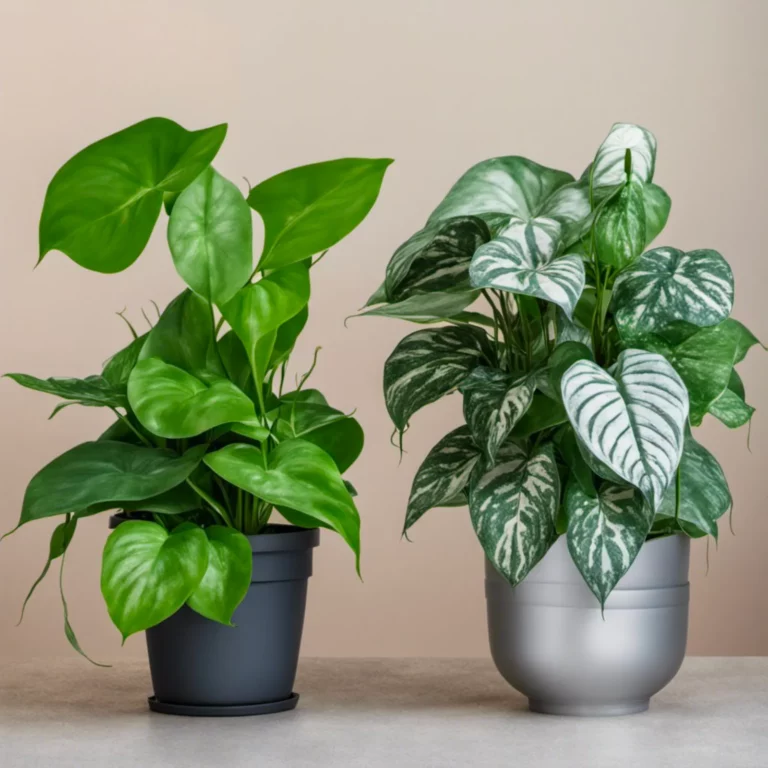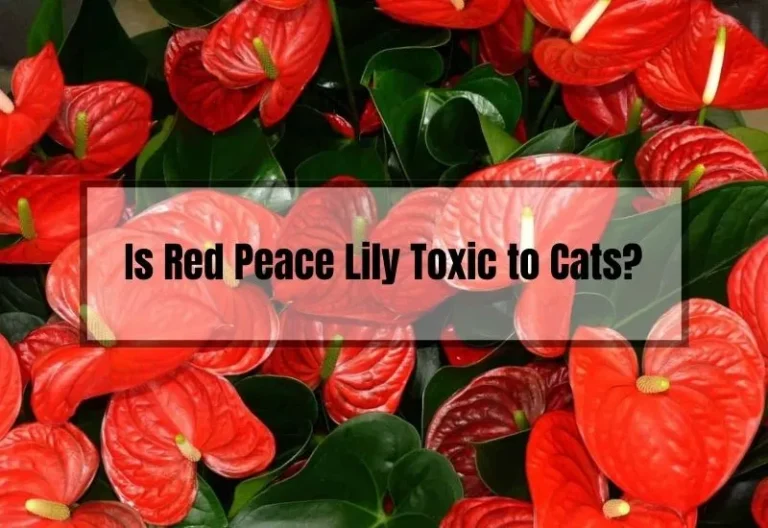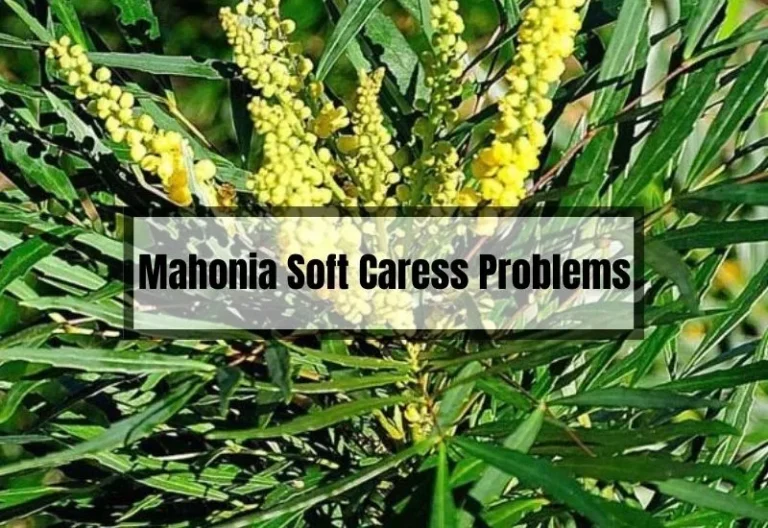Sarcococca Confusa vs Ruscifolia: Which One is Right for Your Garden?
Are you searching for the ideal evergreen shrub for your garden? Sarcococca Confusa and Ruscifolia, both commonly referred to as Sweet Box, are popular choices. While they share many similarities, there are key differences to consider when deciding which one to plant.
Both Sarcococca Confusa and Ruscifolia are prized for their fragrant winter blooms and evergreen foliage. They are low-maintenance plants that thrive in various conditions.
However, there are distinctions to note. Sarcococca Confusa is more adaptable to different growing conditions, while Sarcococca Ruscifolia prefers USDA zones 7-9. Additionally, Ruscifolia bears red berries, while Confusa has black berries.
Key Takeaways
- Sarcococca Confusa and Ruscifolia are both great evergreen shrubs for your garden.
- Sarcococca Confusa is more flexible in terms of where it can grow, while Sarcococca Ruscifolia prefers USDA zones 7-9.
- Sarcococca Ruscifolia has red berries, while Sarcococca Confusa has black berries.
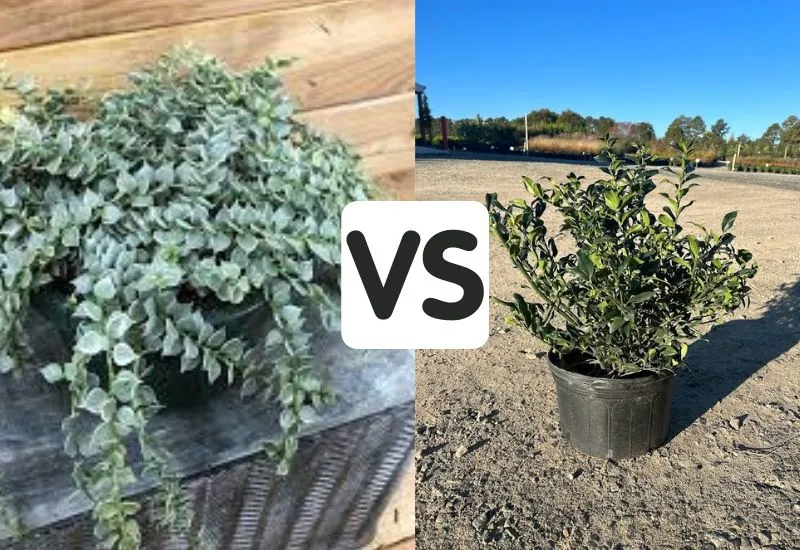
Sarcococca Confusa vs Ruscifolia
If you’re looking to add a touch of green to your garden, you might want to consider Sarcococca Confusa or Ruscifolia.
These two plants are similar in appearance, but they have some differences that you should be aware of before making your decision.
Understanding Sarcococca Confusa
Sarcococca Confusa, also known as Sweet Box, is an evergreen shrub that can grow up to 5 feet tall. It has glossy, dark green leaves and small, fragrant flowers that bloom in the winter. The flowers are followed by purple-black berries that resemble black currants.
This plant is versatile and can grow in a variety of conditions, from full sun to partial shade. It prefers well-drained soil and is hardy in USDA zones 6-9.
Understanding Sarcococca Ruscifolia
Sarcococca Ruscifolia, also known as Fragrant Sweet Box, is another evergreen shrub that can grow up to 4 feet tall. It has similar glossy, dark green leaves and fragrant flowers that bloom in the winter. However, the flowers are followed by wine-red berries instead of purple-black ones.
This plant prefers partial shade and well-drained soil. It is hardy in USDA zones 7-9.
Key Differences
The main difference between Sarcococca Confusa and Ruscifolia is the color of their berries. Confusa has purple-black berries, while Ruscifolia has wine-red berries. Confusa is also a bit taller, growing up to 5 feet, while Ruscifolia grows up to 4 feet.
Another difference is the hardiness zones. Confusa can grow in zones 6-9, while Ruscifolia prefers zones 7-9.
Here’s a quick comparison table to summarize the key differences between the two plants:
| Sarcococca Confusa | Sarcococca Ruscifolia | |
|---|---|---|
| Berry Color | Purple-Black | Wine-Red |
| Height | Up to 5 feet | Up to 4 feet |
| Hardiness Zones | 6-9 | 7-9 |
| Sun/ Shade | Full Sun to Partial Shade | Partial Shade |
| Soil Type | Well-drained | Well-drained |
Ideal Growing Conditions
When it comes to growing Sarcococca Confusa and Ruscifolia, there are a few things to keep in mind.
Both of these shrubs prefer a shady spot in the garden, but they can tolerate some sun as long as they receive enough moisture. Here are some specific growing conditions to keep in mind:
Soil
Sarcococca Confusa and Ruscifolia are not too picky when it comes to soil, but they do prefer a well-draining soil that is rich in organic matter.
They can tolerate a range of soil pH levels, but they do best in slightly acidic to neutral soil. If you have heavy clay soil, consider amending it with compost or other organic matter to improve drainage.
Water
These shrubs prefer consistently moist soil, but they do not like to be waterlogged. Water deeply once a week during dry spells, and make sure the soil stays evenly moist. Avoid letting the soil dry out completely, as this can stress the plant and reduce flowering.
Temperature
Sarcococca Confusa and Ruscifolia are hardy in USDA zones 6-9, which means they can tolerate a range of temperatures.
However, they do prefer cooler temperatures and can suffer in hot, dry conditions. If you live in a hot climate, consider planting these shrubs in a spot that receives afternoon shade.
Fertilizer
These shrubs do not require a lot of fertilizer, but you can give them a boost in the spring with a slow-release, balanced fertilizer. Avoid over-fertilizing, as this can lead to excessive growth and reduced flowering.
Pruning
Sarcococca Confusa and Ruscifolia do not require a lot of pruning, but you can shape them or remove any dead or damaged branches in the spring. Avoid pruning in the fall, as this can remove flower buds and reduce flowering the following year.
By following these growing conditions, you can ensure that your Sarcococca Confusa or Ruscifolia thrives in your garden.
Plant Maintenance
Now that you have decided to add either Sarcococca Confusa or Ruscifolia to your garden, you need to know how to maintain them. Fortunately, both varieties are low maintenance and easy to care for.
Watering
Sarcococca Confusa and Ruscifolia require moderate watering. You should water them deeply and regularly during the first year after planting to help them establish a strong root system.
After that, you can reduce watering to once or twice a week, depending on the weather conditions. Make sure to water the plants deeply, so the water reaches the roots, and avoid getting the foliage wet to prevent fungal diseases.
Fertilizing
Sarcococca Confusa and Ruscifolia do not require much fertilization. You can apply a slow-release fertilizer in the early spring to help promote healthy growth and flowering.
Alternatively, you can use organic matter, such as compost or well-rotted manure, to improve soil fertility and structure.
Pruning
Sarcococca Confusa and Ruscifolia do not require much pruning. However, you can prune them lightly in the early spring to remove any dead, damaged, or diseased branches, and to shape the plants. Avoid pruning them heavily, as this can reduce flowering and damage the plants.
Pests and Diseases
Sarcococca Confusa and Ruscifolia are generally pest and disease resistant. However, they can be susceptible to scale insects, spider mites, and fungal diseases, such as powdery mildew and leaf spot.
You can control pests and diseases by practicing good sanitation, avoiding overhead watering, and using organic or chemical control methods if necessary.
Winter Protection
Sarcococca Confusa and Ruscifolia are hardy evergreen shrubs that can tolerate cold temperatures and frost. However, they can suffer from winter damage if exposed to strong winds, heavy snow, or prolonged freezing temperatures.
You can protect them by wrapping them in burlap or frost cloth, or by planting them in a sheltered location.
Maintaining Sarcococca Confusa and Ruscifolia is not a difficult task. With a little care, you can enjoy their beautiful foliage, fragrant flowers, and attractive berries for years to come.
Potential Issues
When it comes to Sarcococca Confusa and Ruscifolia, there are a few potential issues to keep in mind. Here are some things to consider before planting these shrubs in your garden:
Spreading
Both Sarcococca Confusa and Ruscifolia can spread via underground shoots, which means they have the potential to become invasive if not properly contained. To prevent this, consider planting them in containers or using a root barrier.
Toxicity
While Sarcococca plants are generally considered safe, the berries can be toxic if ingested in large quantities. Keep this in mind if you have pets or small children who may be tempted to eat the berries.
Pruning
Sarcococca plants don’t require much pruning, but if you do need to trim them back, be aware that the leaves and stems contain a sap that can be irritating to the skin. Wear gloves and long sleeves when pruning to avoid contact with the sap.
Pests and Diseases
Sarcococca plants are generally resistant to pests and diseases, but they can occasionally be affected by spider mites, scale insects, and powdery mildew. Keep an eye out for any signs of infestation and treat as necessary.
Overall, Sarcococca Confusa and Ruscifolia are relatively low-maintenance plants that can add year-round interest to your garden. Just be sure to keep these potential issues in mind to ensure their success.
How to Propagate Sarcococca Ruscifolia?
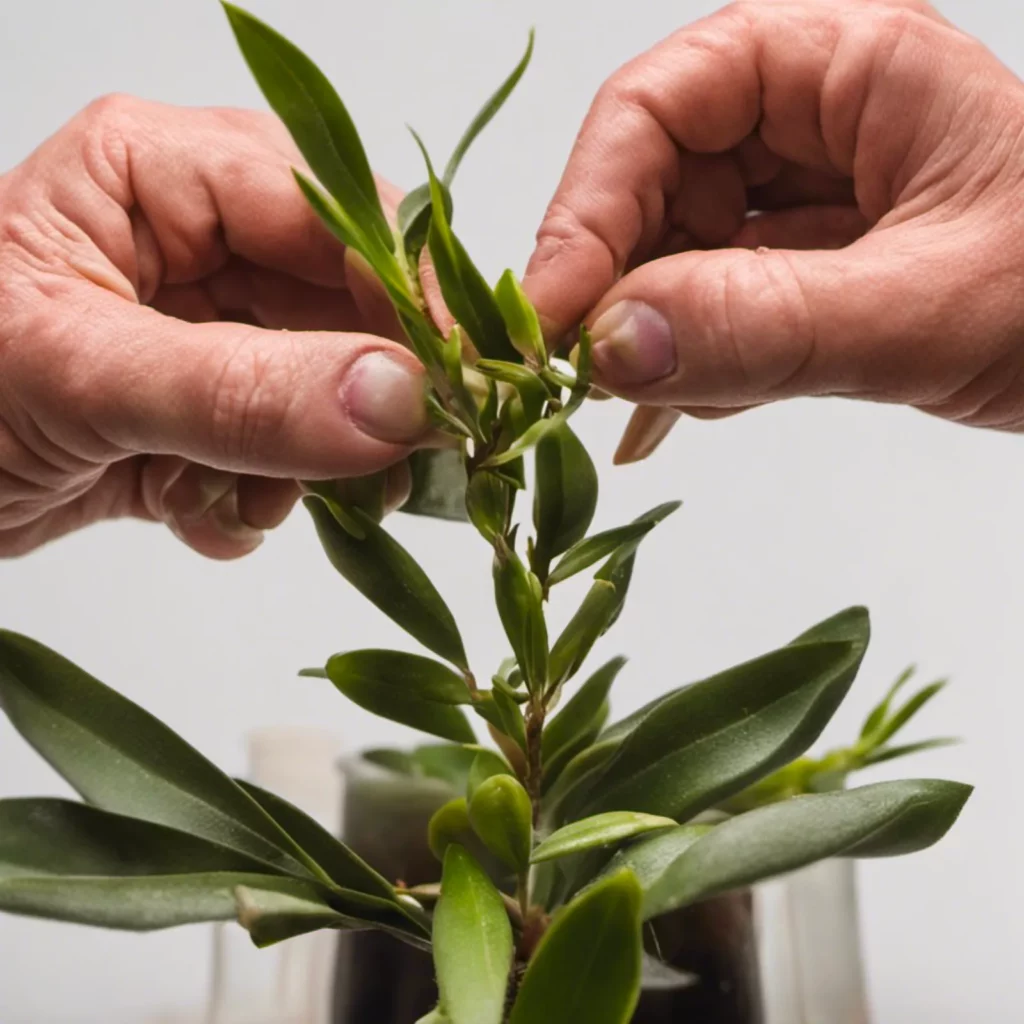
Propagating Sarcococca Ruscifolia is a simple process that can be done by taking semi-hardwood stem cuttings from the parent plant. Here are the steps to propagate Sarcococca Ruscifolia:
- Choose a healthy stem – Select a healthy stem from the parent plant that is about 4-6 inches long and has recently matured wood and growing plant tissue.
- Cut the stem – Use a sharp, sterile knife to cut the stem at a 45-degree angle. Make sure to include a few leaves and remove any flowers or buds.
- Remove the lower leaves – Remove the lower leaves from the stem, leaving only the top 2-4 leaves.
- Dip the stem in rooting hormone – Dip the cut end of the stem in rooting hormone powder to encourage root growth.
- Plant the stem – Plant the stem in a well-draining potting mix, making sure the soil is moist but not waterlogged.
- Cover with plastic – Cover the pot with a clear plastic bag to create a mini greenhouse and keep the humidity high.
- Place in a warm, bright location – Place the pot in a warm, bright location but out of direct sunlight.
- Water regularly – Water the cutting regularly to keep the soil moist.
- Wait for roots to grow – After a few weeks, check for root growth by gently tugging on the stem. If you feel resistance, roots have started to grow.
- Transplant the cutting – Once the roots have grown to about an inch in length, transplant the cutting into a larger pot or into the ground.
By following these steps, you can easily propagate Sarcococca Ruscifolia and enjoy the benefits of this fragrant and beautiful plant in your garden.
Choosing the Right Sarcococca for Your Garden
When it comes to picking the perfect Sarcococca for your garden, consider factors like size, hardiness zone, and available space. If you’re looking for a slightly larger shrub that can handle a wider range of climates, S. confusa might be your best bet.
However, if you have a smaller garden or live in USDA zones 7-9, S. ruscifolia could be the ideal choice for you. Ultimately, it’s important to select the species that best suits your garden’s unique conditions so that both you and your plants can flourish.
Frequently Asked Questions (FAQs)
What are some common uses for Sarcococca shrubs in the garden?
Sarcococca shrubs make for fantastic border plants or ground cover, thanks to their evergreen foliage and compact growth habits. Their delightful fragrance also makes them a popular choice for planting near walkways, entrances, or patios, so you can enjoy their sweet scent as you stroll through your garden.
Can Sarcococca confusa and Sarcococca ruscifolia be grown in containers?
Absolutely! Both S. confusa and S. ruscifolia can be grown in containers, making them a versatile choice for those with limited garden space or who want to add a fragrant touch to their balconies or terraces.
Are Sarcococca shrubs deer-resistant?
Good news for those of you dealing with pesky deer – Sarcococca shrubs are generally considered deer-resistant. While no plant is completely deer-proof, these shrubs are less likely to be on their menu.
What are the best companion plants for Sarcococca shrubs?
When it comes to companion plants, consider pairing your Sarcococca with other shade-loving plants like hostas, ferns, or hellebores. This will create a lush, layered look in those shadier areas of your garden.
Do Sarcococca confusa and ruscifolia have any pest or disease issues to be aware of?
Sarcococca shrubs are generally quite resilient and not prone to significant pest or disease issues. However, it’s always a good idea to keep an eye out for any signs of trouble and address them as needed to keep your plants happy and healthy.
Conclusion
And there you have it – the main differences between Sarcococca confusa and Sarcococca ruscifolia. Whether you choose the slightly larger and more adaptable S. confusa or the more compact and slightly less hardy S. ruscifolia, you’ll be adding a fragrant, low-maintenance shrub to your garden that’s sure to impress.
Remember, the key to a thriving garden is choosing the right plants for your unique conditions. So, trust your instincts, and let your green thumb guide you to the perfect Sarcococca for your outdoor haven. Happy gardening, everyone!

